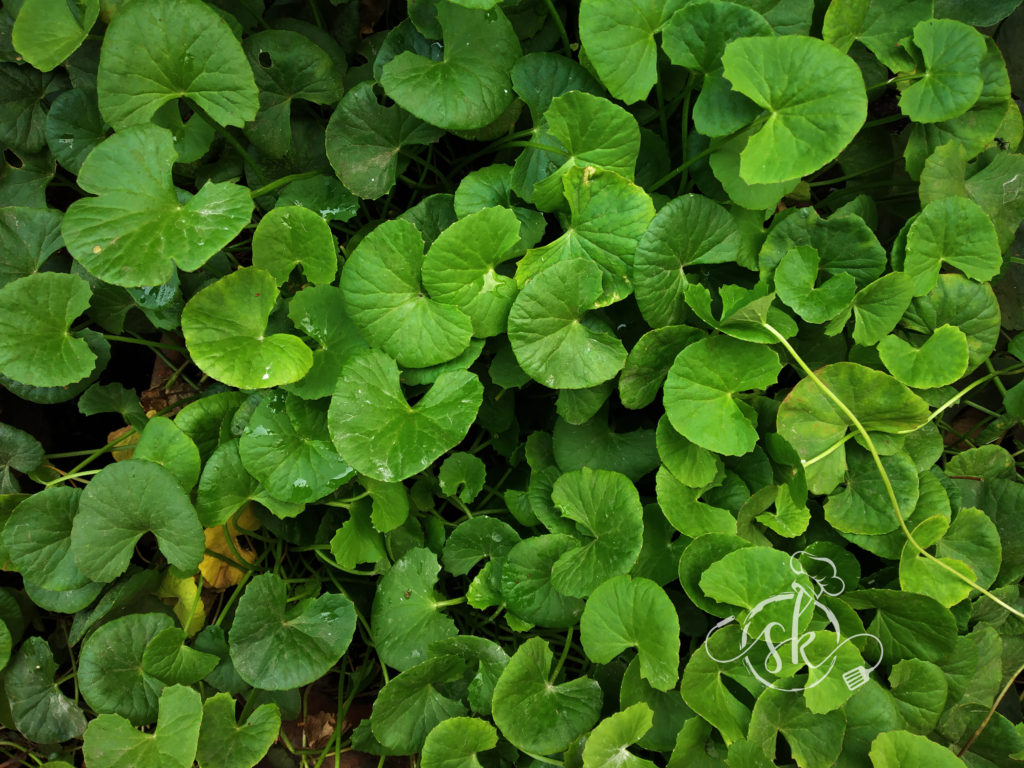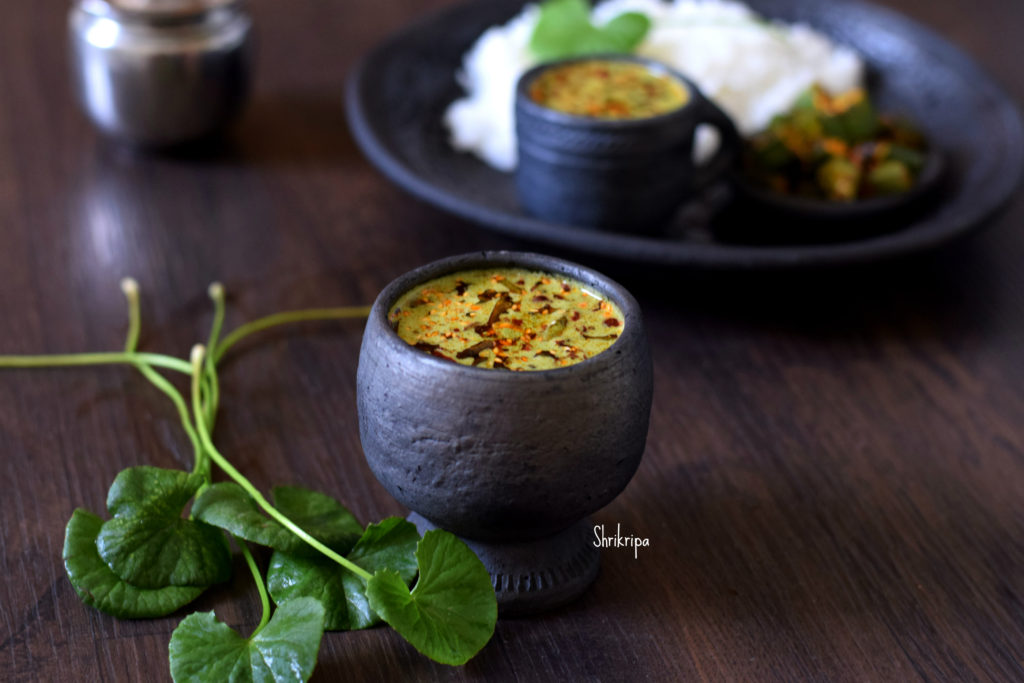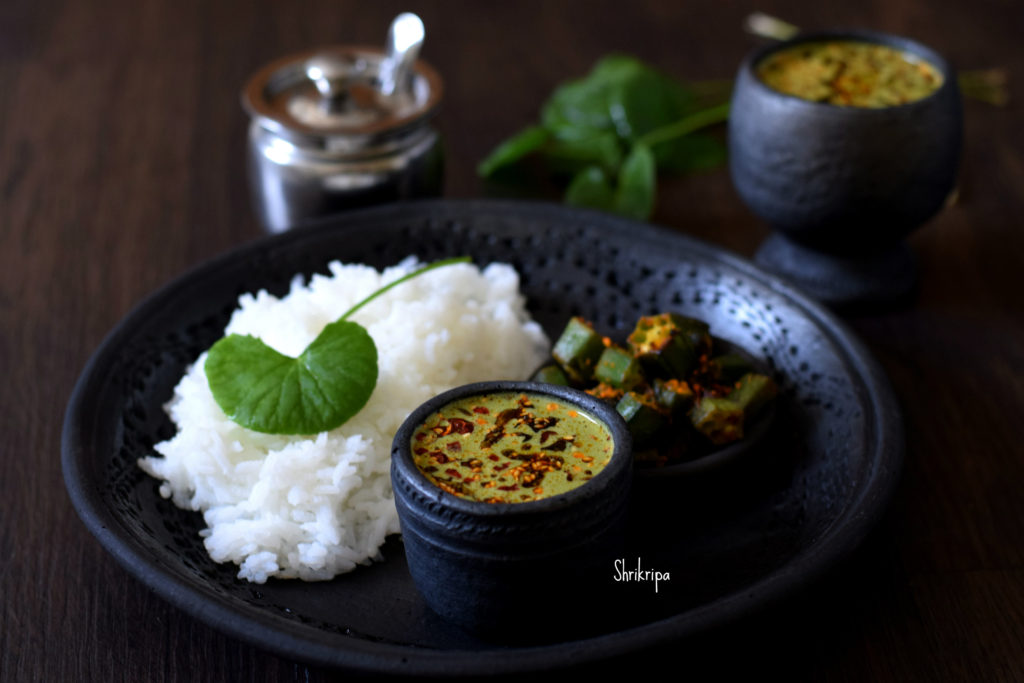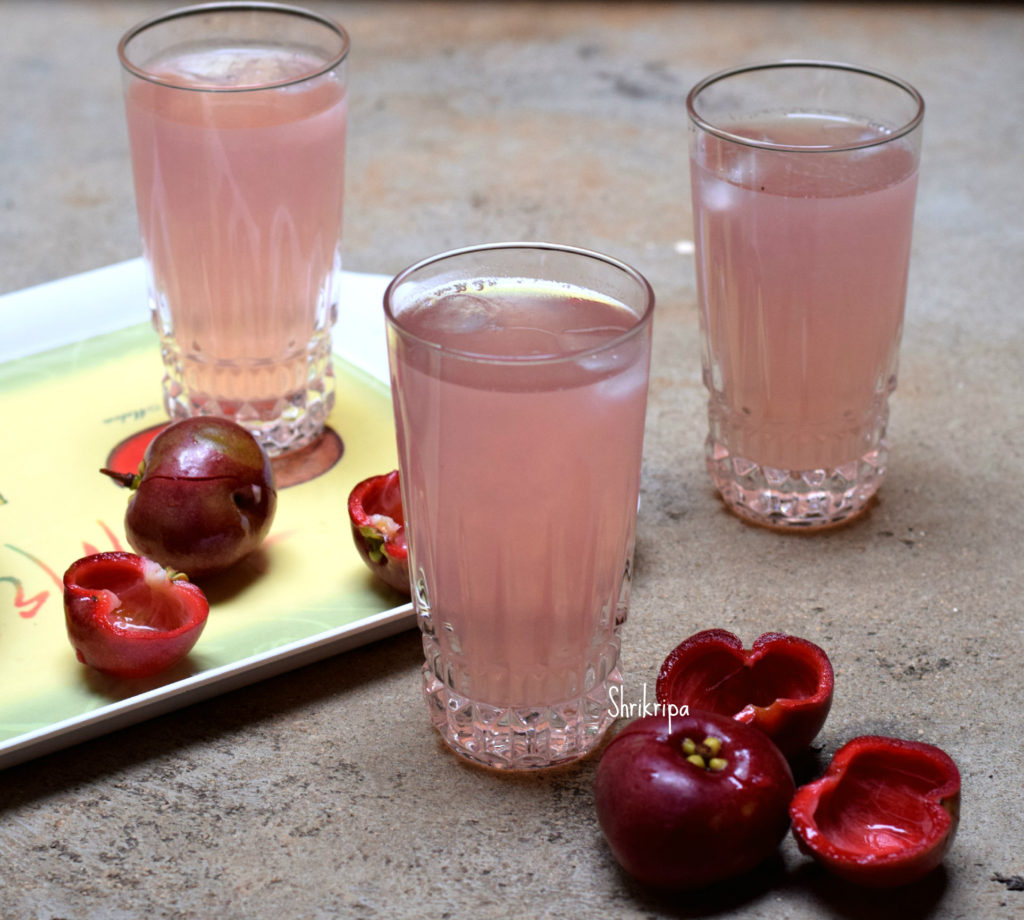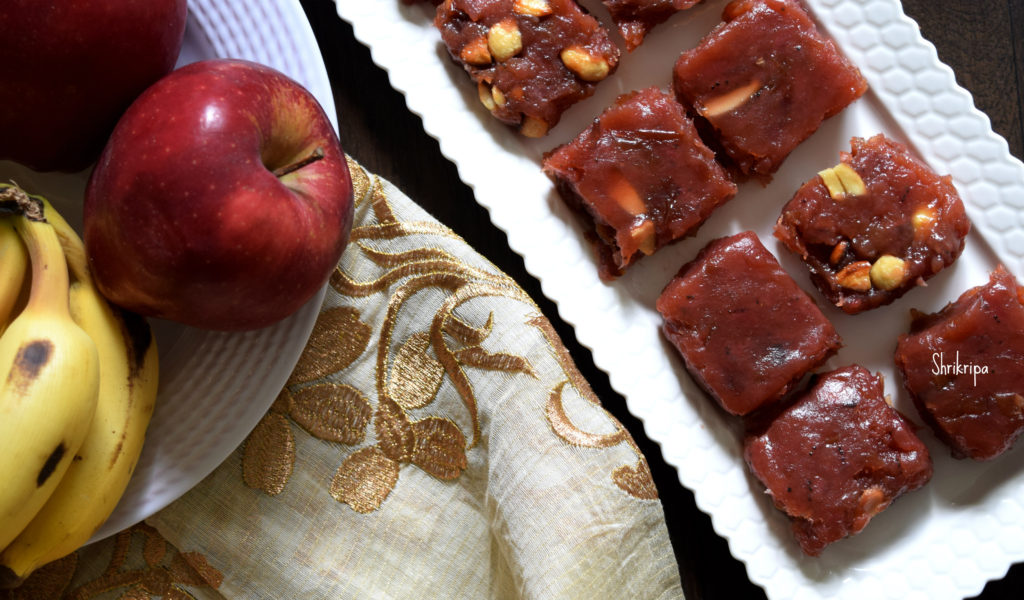Who doesn’t love Masala Dosa? It is an absolute favourite in our family.
A properly made crisp Dosa is very delicious if the batter is perfectly fermented with little sour flavour and correct consistency.
Normally Masala Dosa can be served either by applying Red chutney or Green chutney.
Red chutney what I make is not very hot and made with only chillies. It is coconut-based garlic flavoured chutney.
In other hand, green chutney smeared Dosa is something I relish in Hotel MTR outlet in Bangalore. I tried to replicate the taste at home, and it is once again a coconut chutney, which is flavoured by coriander leaves.
In our coastal region, you never get to see red chutney applied Masala dosas. It is normal paper plain Dosa with bhaji at the centre and rolled like a paper roll and served with the watery ginger chutney and sambar as an accompaniment.
In our house we normally make red chutney and apply and enjoy garlicky flavoured chutney with aloo masala.
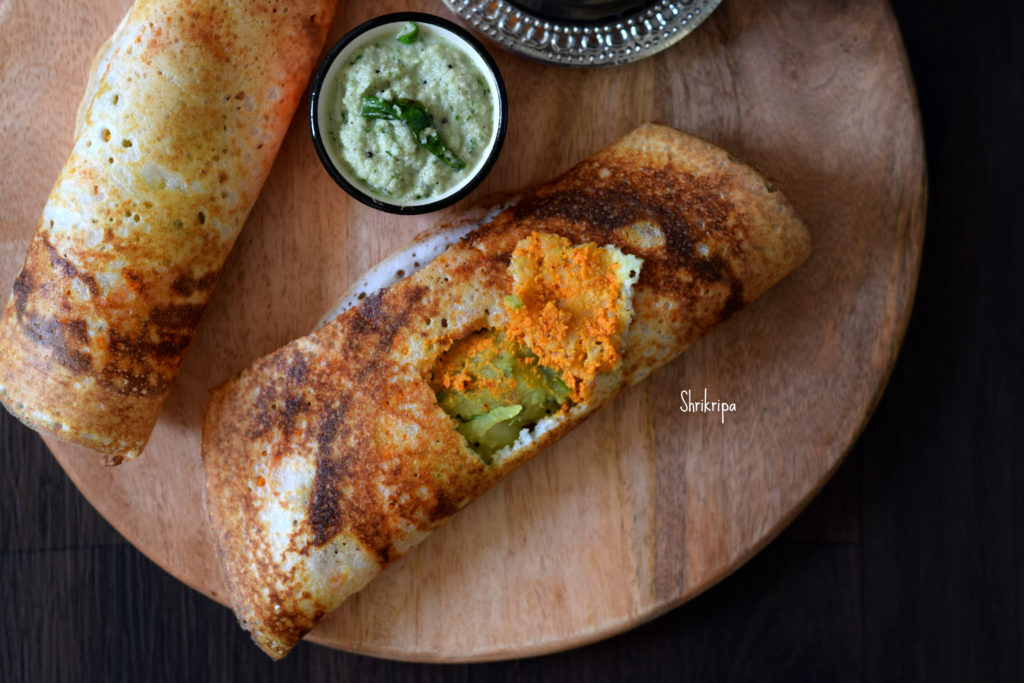
First, we will see How to make Dosa Batter:
Ingredient:
Dosa rice -1 cup
Idly rice -1 cup
Urad dal – ½ cup
Bengal gram/Chana dal – 1 tbl sp
Fenugreek/methi seeds – 1 tsp.
Beaten rice – ¼ cup
Method:

-Wash all these ingredients couple of times.
-Soak this in a sufficient water (washed rice and dal should submerge) for 3 to 4 hours. Drain water from the rice and keep aside. This water is used while grinding according to the requirement. Grind soaked rice –dal mixture by adding salt in to a very fine /smooth batter by using wet grinder or Mixer grinder. I prefer Wet grinder and it certainly gives much finer, perfect batter. After removing the batter adjust the consistency by mixing properly. Now keep this ground batter for fermentation in a big vessel, so that it will allow room for puffed/fermented batter. It will take anywhere between 8 to 16 hours (according to the outside weather)
Note: In Bangalore I usually soak my lentils around morning, grinding happens around afternoon 2 to 3 pm and until next morning I keep the batter for fermentation. This is how I get my perfectly fermented batter.
Potato Bhaji/ filling:

Ingredients:
Potato – 6 big
Onion – 3 big
Green chilli – 2 to 3
Grated ginger – ½ “
Turmeric – ½ tsp.
Salt
Seasoning: Coconut oil -2 tbl sp, mustard- 1tsp, Urad dal -1 tsp., chana dal-1 tsp, Cumin seeds – ½ tsp, hing – ¼ tsp, Red chilli -1, curry leaves -2 springs.
Chopped coriander leaves for garnishing.
Method:
-Wash potato cut in to half and put this in a cooker with sufficient water. Cook for two whistles. Cool, remove outer skin, mash and keep aside.
-Slice onion and slit green chillies.
-Take one kadai, add coconut oil, mustard, when it starts to splutter, add cumin, hing, Urad dal, chana dal, red chilli. When dal becomes red add Curry leaves, slit green chillies and onions.
-Add turmeric and fry onions till it becomes light brown.
-Now add one to two cups of water, add salt.
-When water starts boiling add mashed potato and mix nicely. Check for the seasoning and close the lid and cook for a while until it becomes homogenised and water drains.
-Switch off the gas and garnish with chopped coriander leaves.
Red Chutney: It is garlic flavoured very thick coconut chutney.
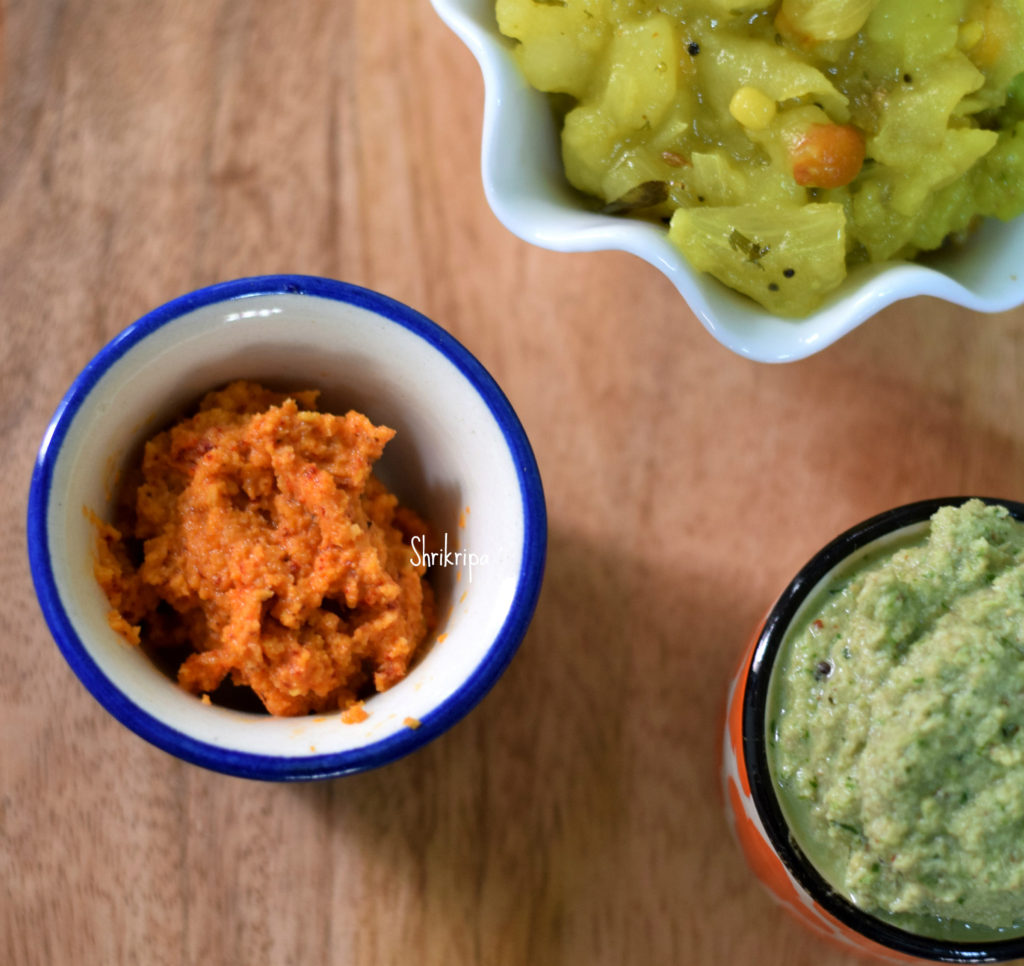
Ingredients:
Grated fresh coconut – 1 cup
Red chilli – 2
Garlic cloves -7 to 8
Tamarind – ¼ tsp.
Salt
Method: Roast Red chillies by putting ¼ tsp of oil.
Put all the ingredients together in a mixer jar, dry grind at first and then put very little water and make very thick consistency. This chutney is used for applying over the Dosa while making.
Green chutney: This chutney can be smeared as well as served as an accompaniment with Dosa. If you are smearing, keep the consistency little thick and if you are serving as a side, you can add little water and make it thin.

Ingredient:
Grated fresh coconut – 1 cup
Roasted gram/ puffed gram – ½ cup (putani or Hurigadale)
Green chillies – 3 to 4
Tamarind – little
Sugar – ½ tsp
Salt
Coriander leaves – 1 small cup
Curry leaves – 1 spring
Method:
Fist grind coconut, puffed gram, salt, tamarind by adding little water. Then add chopped coriander and curry leaves and churn a little and add seasoning with mustard and curry leaves.
White Coconut Chutney: This is served as a side dish and usually with ginger flavour.

Ingredients:
Fresh grated coconut – 1 cup
Green chilli – 1 or 2
Tamarind – ¼ tsp.
Salt
Ginger – ½ “
Method: Grind all these by putting sufficient water and adjust the consistency. Do seasoning by putting coconut oil, mustard, red chilli and curry leaves.
How to Prepare Masala Dosa:
Now everything is ready, and we can proceed with our preparation.
-Keep the Dosa griddle over the gas stove for heating. You can use Iron griddle or Non-stick one.
-Nicely mix fermented Dosa batter and check for the consistency. If it is thick add ½ cup of water and adjust and keep it ready.


-When Dosa tawa becomes hot, pour one serving spoon of Dosa batter, move spatula in to a circular motion and spread the batter.
-sprinkle little ghee /butter/oil and cook until it is little brown in a low flame.
-when it is light brown spread Red garlic chutney or Thick green chutney at the centre of the Dosa in a circular motion and keep one serving spoon of potato filling at the centre and fold.
-Now serve this ready Masala Dosa with White coconut chutney and Enjoy.
